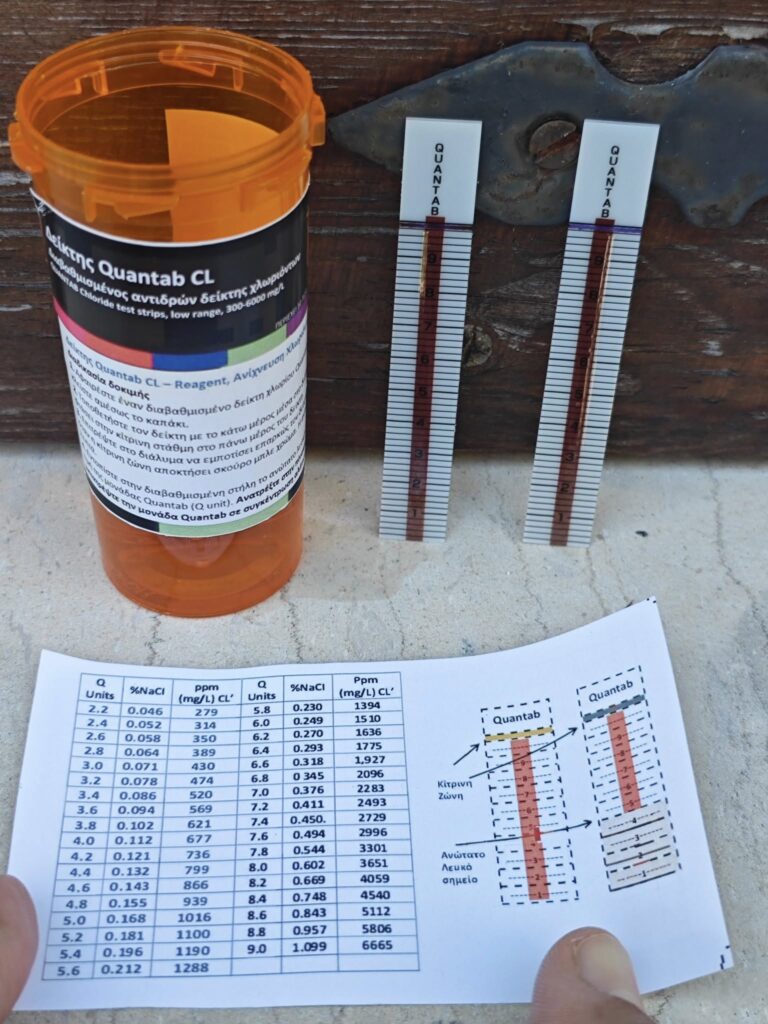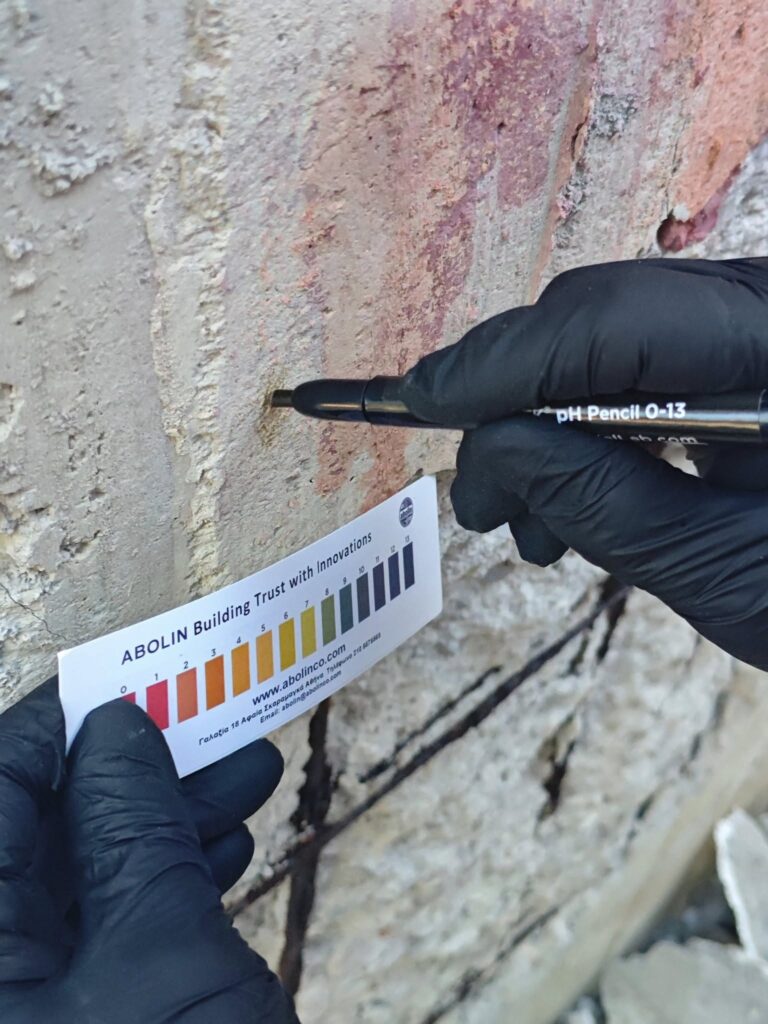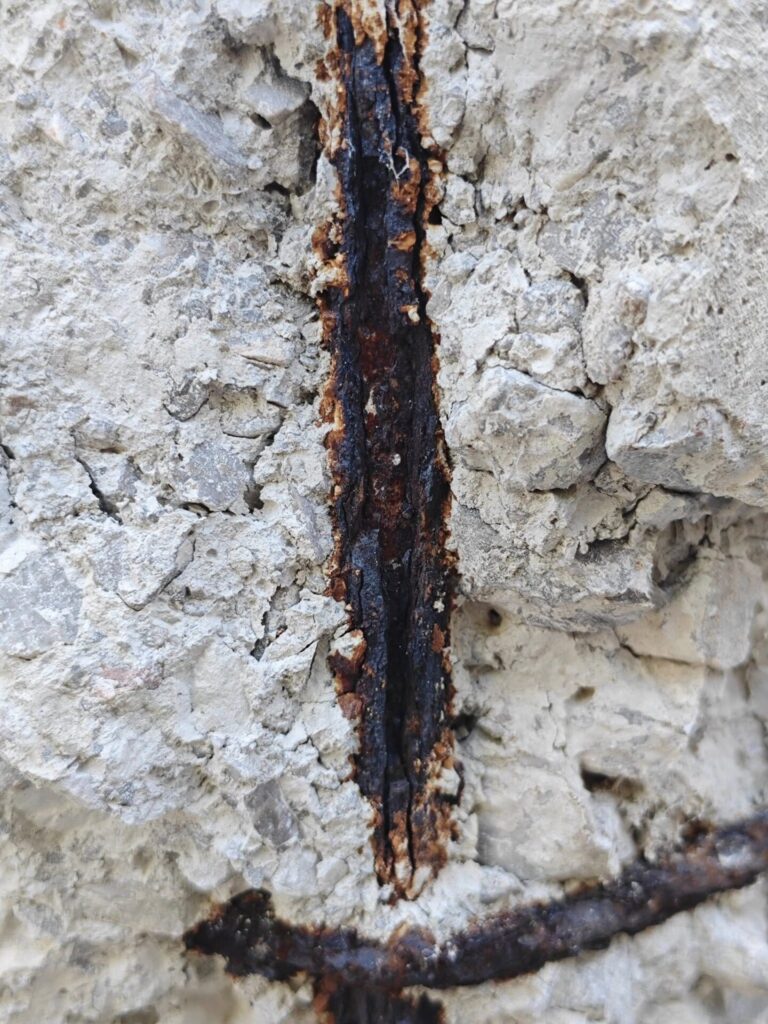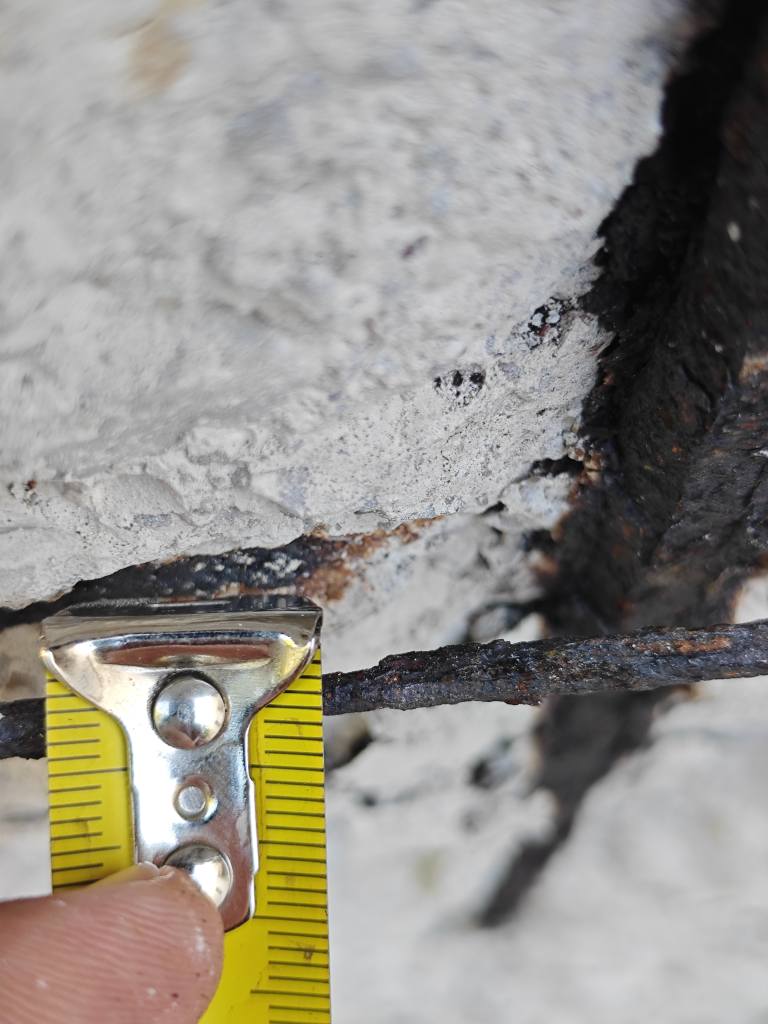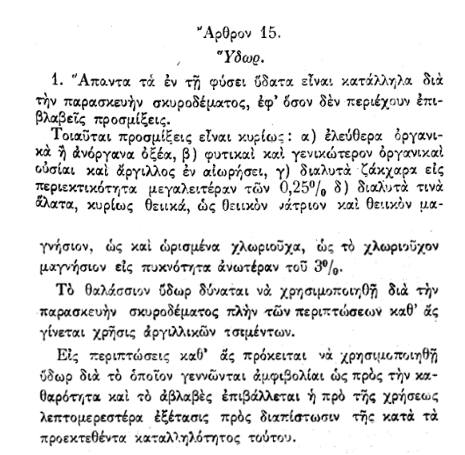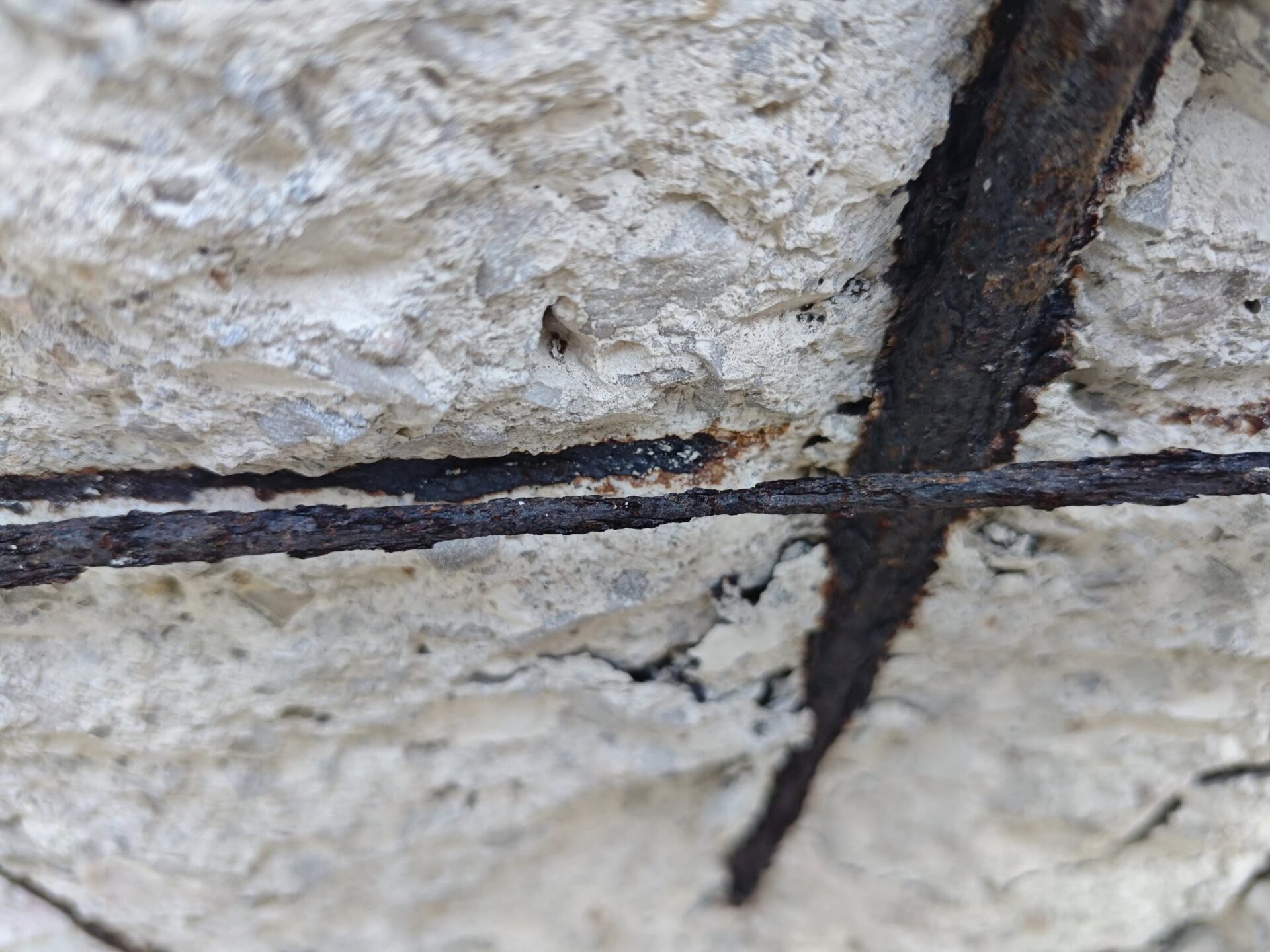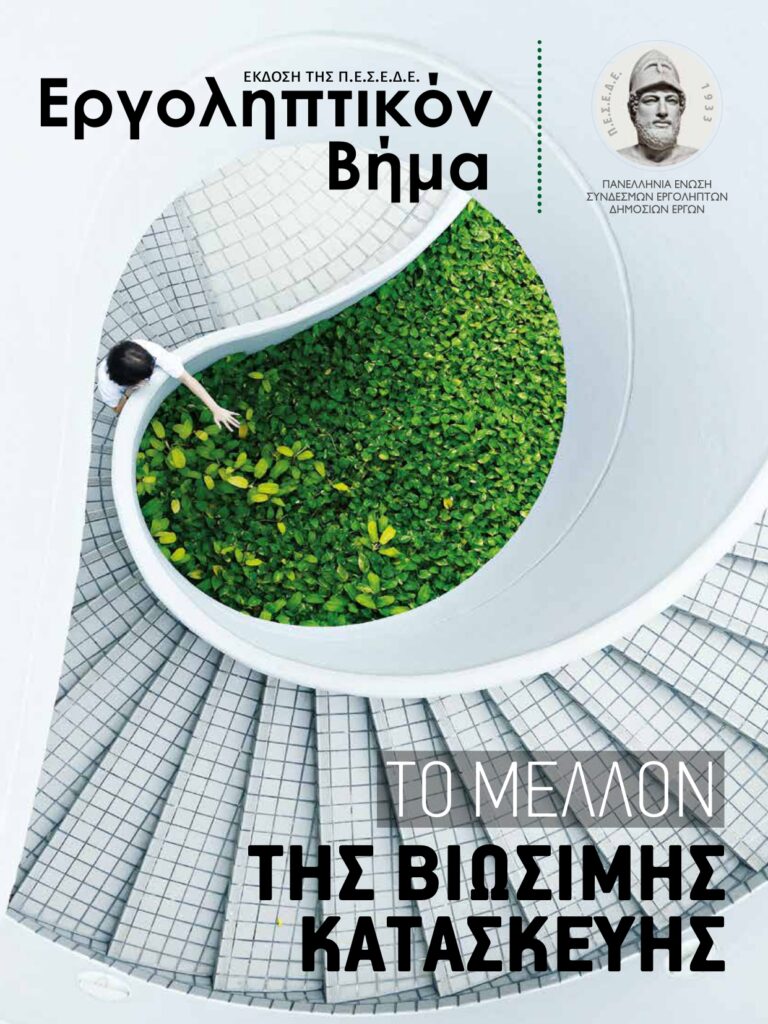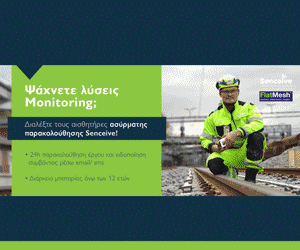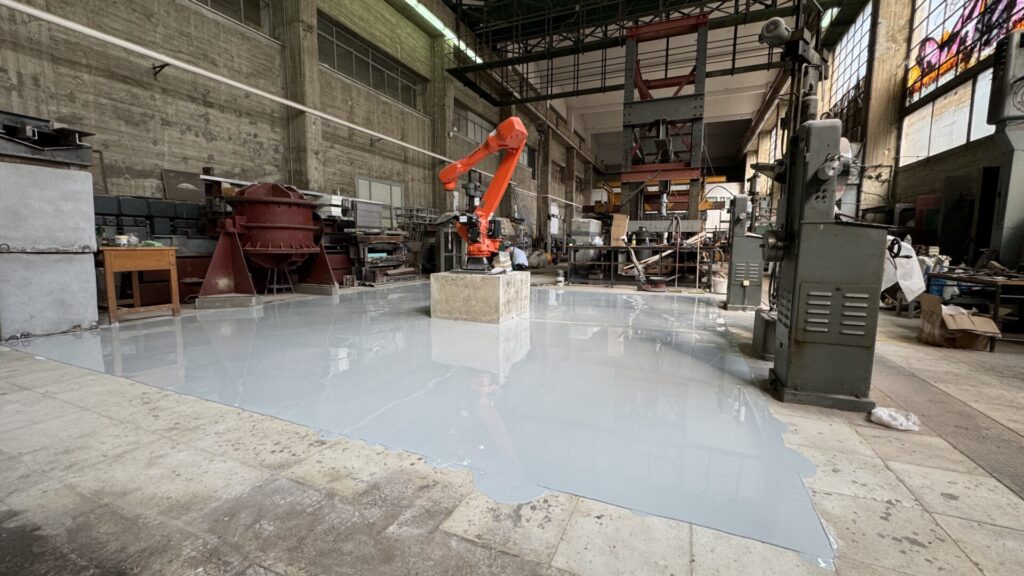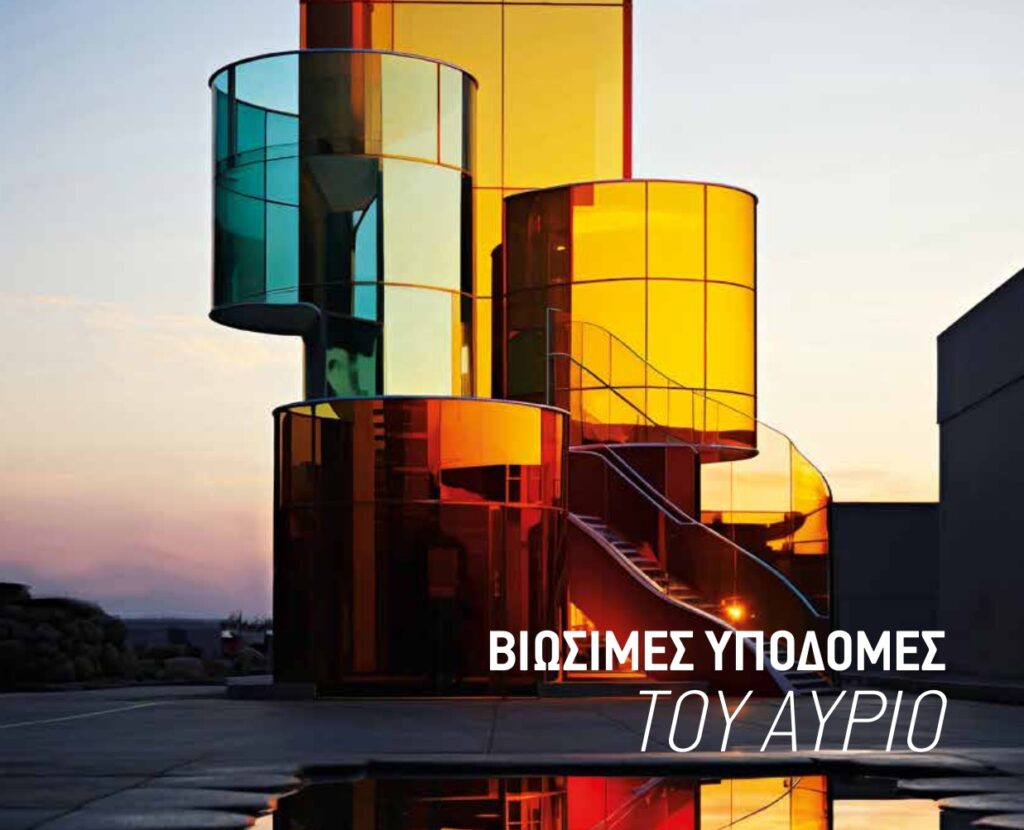Share
Ολοκληρώθηκε η διενέργεια φυσικοχημικών ελέγχων σε παραθαλάσσια κατοικία για αποτίμηση της παθολογίας, δηλαδή προσδιορίστηκε το ακριβές αίτιο (η παθολογία) των βλαβών (το αιτιατό).
Στο πλαίσιο αυτό, πρέπει να αναφερθεί ότι ο όρος «αίτιο-αιτιατό» σχετίζεται στενά με τη φιλοσοφία του Αριστοτέλη (ο οποίος ανέπτυξε τη θεωρία των τεσσάρων αιτιών), όπου κάθε αποτέλεσμα (αιτιατό) έχει την αντίστοιχη αιτία του.
Συγκεκριμένα:
- μετρήθηκε το pH με χρήση υγρών δεικτών DPi/RBI Rainbow διά ψεκασμού και με μολύβι pH της Abolin.
- έγινε ψεκασμός δείκτη Νιτρικού Αργύρου (AgNO₃ 0.1M) της Abolin για ένδειξη ύπαρξης χλωριόντων
- ελήφθησαν δείγματα σοβά και σκυρόδεματος και απεστάλησαν στην Πολυτεχνική σχολή του ΔΠΘ για εξαγωγή του ποσοστού ολικών χλωριόντων
- έγινε έλεγχος στο νερό γεώτρησης της κατοικίας για το ποσοστό των χλωριόντων με χρήση τιτλοδότη Quantab CL⁻ της Abolin
- έλεγχος πιθανότητας διάβρωσης με συσκευή μέτρησης ημι-δυναμικού και ηλεκτρόδιο Ag/AgCl
- έγιναν μετρήσεις της υγρασίας του σκυροδέµατος και του σοβά με τους μετρητές υγρασίας Exotek MC-380 και Extech MO257
Αυτό είναι το πρώτο και πιο ουσιώδες στάδιο για την εύρεση του αιτίου, καθώς και για την συνέχεια που έπεται σε ελέγχους, μελέτες και επεμβάσεις.
Η συγκεκριμένη κατοικία έχει φέροντα οργανισμό από οπλισμένο σκυρόδεμα, κατασκευασμένη το 1980, όπου τότε ήταν υπό εφαρμογή το Β.Δ. του 1954 (ΦΕΚ 160Α-1954) δηλαδή ο “Κανονισμός διά την Μελέτην και Εκτέλεσιν Οικοδομικών Έργων εξ Ωπλισμένου Σκυρόδεματος”. Ο κανονισμός αυτός προέβλεπε 4 κατηγορίες σκυροδέματος με την πιο συνήθη την Β160, ποσότητες τσιμέντου από 240-300 kg/m3 και επιτρεπόταν το θαλασσινό νερό για την παρασκευή. Για τον χαλύβδινο οπλισμό τότε ίσχυε το Ευρωπαϊκό πρότυπο EU 80-69 του 1969 με ενσωμάτωση της διάκρισης τους, βάσει της διάταξης των νευρώσεων. Η επικάλυψη του σκυροδέµατος μετρήθηκε ~30 mm και του σοβά στα ~10 mm.
Αποτέλεσμα:
pH<9 και ενδογενή χλωριόντα (μολυσμένο νερό και αδρανή στο μίγμα σκυρόδεματος) μεταφράζονται ως συνεργετική δράση χλωριόντων και ενανθράκωσης ‼️
➡️ A series of physicochemical inspections was completed in a coastal residence to assess its deterioration mechanisms, namely to identify the precise root cause (pathology) of the observed defects (causal outcome).
It should be noted that the term “cause–effect” is closely related to Aristotle’s philosophy (who developed the theory of the four causes), where every effect (causal outcome) corresponds to a specific cause.
Specifically:
- The pH of the concrete surface was measured using DPi/RBI Rainbow liquid indicators applied by spraying, as well as with a pH pencil (Abolin).
- A spray test with Silver Nitrate indicator solution (AgNO₃ 0.1M, Abolin) was performed to detect the presence of chlorides.
- Samples of plaster and concrete were collected and sent to the Polytechnic School of the Democritus University of Thrace for quantification of total chloride content.
- The groundwater from the property’s borehole was tested for chloride concentration using Quantab Cl⁻ titration strips (Abolin).
- The probability of reinforcement corrosion were assessed using a half-cell potential measurement device with an Ag/AgCl electrode.
- Moisture content in the concrete and plaster was measured using Exotek MC-380 and Extech MO257 moisture meters.
🔝This constitutes the first and most essential stage toward identifying the root cause, as well as guiding the subsequent steps involving further inspections, design studies, and remedial interventions.
⏳ This specific residence has a reinforced-concrete structural system, constructed in 1980, during the period when the Royal Decree of 1954 (Government Gazette 160A-1954) was in effect, namely the “Regulation for the Design and Execution of Building Works in Reinforced Concrete.” This regulation defined four concrete strength classes, with the most common being B160, cement dosage ranging from 240–300 kg/m³ and permitted the use of seawater for mixing. For reinforcing steel, the applicable standard was the European Standard EU 80-69 (1969), incorporating classification based on rib pattern configuration. The concrete cover was measured at approximately 30 mm, and the plaster thickness at approximately 10 mm.
Conclusion:
Measured pH < 9 and the presence of internal chlorides (contaminated mixing water and aggregates) indicate a synergistic action of chloride-induced corrosion and carbonation.



